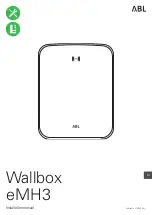
If you do not find an obvious leak,
check the coolant level in the
radiator reserve tank. Add coolant
if the level is below the MIN mark.
If there was no coolant in the
reserve tank, you may need to add
coolant to the radiator. Let the
engine cool down until the pointer
reaches the middle of the
temperature gauge, or lower,
before checking the radiator.
Using gloves or a large heavy
cloth, turn the radiator cap
anticlockwise, without pushing
down, to the first stop. After the
pressure releases, push down on
the cap, and turn it until it comes
off.
Start the engine, and set the
temperature control to maximum.
Add coolant to the radiator up to
the base of the filler neck. If you
do not have the proper coolant
mixture available, you can add
plain water. Remember to have
the cooling system drained and
refilled with the proper mixture as
soon as you can.
Put the radiator cap back on
tightly. Run the engine, and check
the temperature gauge. If it goes
back to the red mark, the engine
needs repair (see
on page
).
If the temperature stays normal,
check the coolant level in the
radiator reserve tank. If it has
gone down, add coolant to the
MAX mark. Put the cap back on
tightly.
6.
7.
8.
9.
10.
11.
325
Taking Care of the Unexpected
If the Engine Overheats (Petrol models)
Emergency
Towing
309
Removing the radiator cap
while the engine is hot can
cause the coolant to spray
out, seriously scalding you.
Always let the engine and
radiator cool down before
removing the radiator cap.
06/10/30 17:24:02 32SJD620_312
Summary of Contents for automobile
Page 9: ...6 06 10 30 16 42 51 32SJD620_009 ...
Page 71: ...68 06 10 30 16 51 02 32SJD620_071 ...
Page 185: ...182 06 10 30 17 06 09 32SJD620_185 ...
Page 289: ...286 06 10 30 17 21 03 32SJD620_289 ...
















































